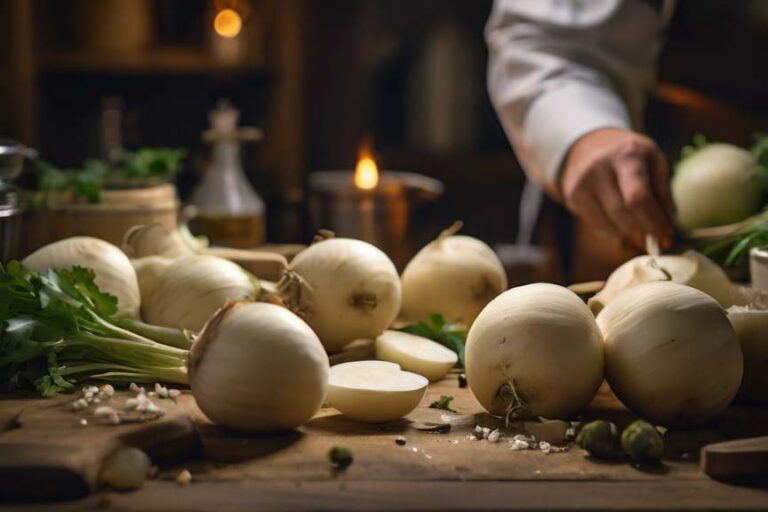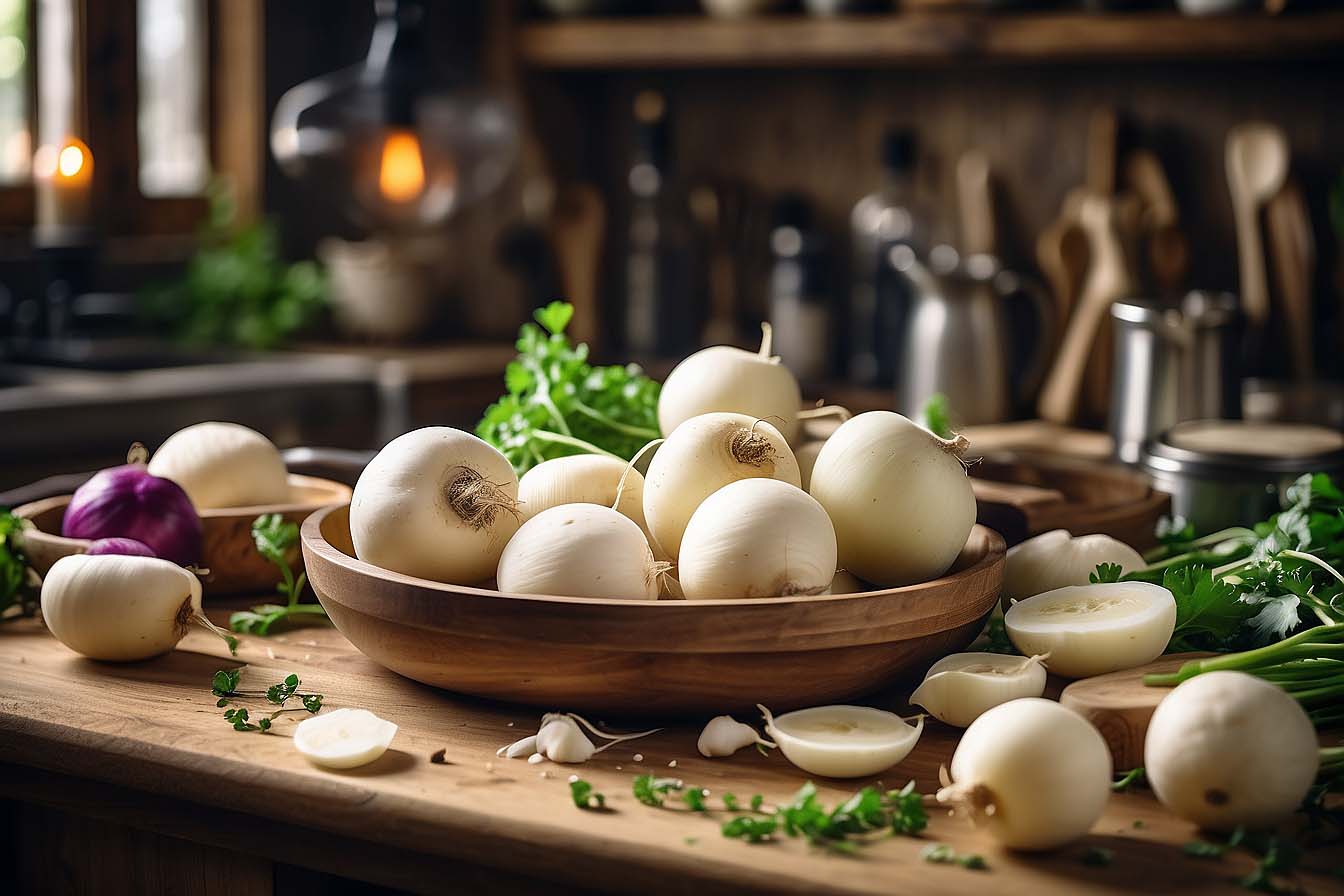You should peel turnips before cooking to remove the tough skin. Peeling ensures a tender and more palatable dish.
Turnips, those versatile root vegetables that belong to the brassica family, often prompt the question of whether to peel or not before cooking. The outer skin of a turnip can be quite tough and peeling it off is a common step in preparation for most recipes.
The Great Turnip Debate: To Peel or Not to Peel
Turnips, the versatile root vegetables, spark a kitchen controversy like no other. Some cooks swear by peeling them, while others staunchly defend the skin. This culinary conundrum leaves many asking, “Should I peel my turnips before cooking?” Let’s dig into the heart of this root debate with a closer look at texture and nutrition.

Texture and Flavor: Altered by Peeling?
Peeling turnips can change the game. Many chef’s aprons are splattered with evidence of the peel’s impact. Here’s the deal with texture and taste:
- Peeling removes the outer skin, resulting in a softer texture post-cooking.
- The skin can have a bitter undertone that some find unpleasant. Peeling enhances sweetness.
- In roasted dishes, keeping the skin may provide a crisp contrast.
Yet, don’t peel in haste. The method of cooking could sway your decision. Steaming and pureeing? Peel away. Roasting for a rustic touch? Maybe leave the skin be.
Nutritional Considerations: Is the Skin That Beneficial?
When nutrition enters the conversation, the stakes get higher. Here’s the lowdown on the skin’s benefits:
| Nutrient | Peel | No Peel |
|---|---|---|
| Fiber | Less | More |
| Vitamins | Some loss | Retained |
| Minerals | Decreased | Higher |
Turnip skins are packed with fiber and nutrients. Peeling them can reduce these benefits. The skin is also rich in antioxidants. Yet, it’s key to note, for a smoother and gentler texture, especially in mashed turnips, go peeled. Concerned about pesticides? Washing thoroughly or buying organic may ease your mind if you choose not to peel.
Learn more: Beets vs Turnips
Prepping Turnips for Different Dishes
Turnips, with their earthy flavor and nutritious profile, make a versatile addition to many meals. The way you prepare these root vegetables can impact both their texture and taste. Below, explore how to prep turnips for roasting or creating smooth, creamy dishes.
Roasted Roots: The Case for Keeping the Skin On
Roasting turnips brings out their natural sweetness. Keeping the skin on can enhance their texture and flavor. Here’s what you need to know:
- Wash thoroughly to remove any dirt.
- Trim off the tops and roots.
- Chop into even pieces for consistent cooking.
- Rub with oil and seasoning for a crispy exterior.
This method locks in nutrients that are often lost when peeling. Plus, the skin turns deliciously crisp in the oven.
Mashed and Puréed: When Peeling Might Be Preferred
Smooth, creamy turnip dishes usually start with peeled vegetables. Here’s why:
- Peeling removes the fibrous outer layer for a silky texture.
- It helps avoid any bitter aftertastes some skins impart.
Peel turnips just like you would a potato:
- Hold the turnip steady.
- Use a vegetable peeler.
- Peel from top to bottom in smooth strokes.
Once peeled, chop and cook until tender, ready for mashing or puréeing.
Peeling Techniques Made Simple
Preparing turnips for a delicious meal begins with the peeling process. Peeling Techniques Made Simple will guide you through the hassle-free steps. With the right tools and a straightforward approach, peeling turnips becomes effortless. Master these techniques to enhance your cooking prep.
Tools of the Trade: What You’ll Need
Every kitchen artist needs their brushes and palette. Likewise, peeling turnips requires specific tools:
- Vegetable peeler: For smooth and swift skin removal.
- Parings knife: In tight spots, this gives precision.
- Chopping board: To securely anchor the turnip.
Step-By-Step Guideline to Peel Like a Pro
Follow these steps to turn peeling from chore to charm:
- Clean: Run your turnips under cold water; scrub off dirt.
- Trim: Cut off the top and bottom ends flatly.
- Stabilize: Place the turnip flat side down on the board.
- Peel: Glide the peeler lengthwise, removing the skin.
- Check: Ensure all skin is removed; touch up with the knife.
- Rinse: Wash the peeled turnip to remove remaining bits.
With these tools and steps, peeling turnips is no longer daunting. Embrace these pro tips and make your meal prep enjoyable.
Cooking With Unpeeled Turnips
Turnips often hide delightful flavors beneath their rugged skins. Savoring turnips with their peels on can unlock earthy textures and nutrients often lost in peeling. Discover the ease of incorporating unpeeled turnips into your meals.
Cleaning Practices for a Dirty Turnip
Preparing unpeeled turnips starts with proper cleaning. Rid your root of soil and bacteria with these tips:
- Use a vegetable brush: This helps remove dirt from the nooks and crannies.
- Rinse with water: Clear away any lingering dirt after brushing.
- Pat dry: Ensure your turnip isn’t wet before cooking.
Creative Recipes That Embrace the Peel
Transform your unpeeled turnips into culinary wonders. Try these simple and tasty ideas:
| Recipe | Ingredients | Instructions |
|---|---|---|
| Roasted Turnip Wedges | Turnips, olive oil, salt, pepper | Cut into wedges, toss with oil, bake until golden |
| Turnip and Potato Mash | Turnips, potatoes, butter, cream | Boil, mash, mix with butter and cream |
| Spiced Turnip Chips | Turnips, spices, oil | Slice thinly, season, air-fry until crisp |
Tips From the Culinary World
Exploring the culinary world reveals a treasure trove of tips and techniques. This includes the debate on whether to peel turnips before cooking. Let’s dive into some expert advice and common pitfalls to sidestep in the kitchen.
Chef Insights: When They Peel and Why
Chefs around the globe follow varied practices, but most agree on key factors influencing the choice to peel turnips. Here’s why they might peel:
- Texture: For a smoother dish, like purees.
- Flavor: Removing the skin reduces bitterness.
- Presentation: Peeled turnips look cleaner on the plate.
And here’s when they might not:
- Nutrition: Skins are nutrient-rich.
- Dish type: Rustic recipes often keep the skin on.
Common Missteps to Avoid While Handling Turnips
Turnips are versatile, yet handling them improperly can affect the dish. Keep in mind the following to ensure top-notch results:
| Mistake | Impact | Correct Approach |
|---|---|---|
| Over-peeling | Wastes the nutritious outer layer and flesh | Use a vegetable peeler for just the skin |
| Ignoring texture | Leads to inconsistent cooking | Cut uniformly for even cooking |
| Not washing properly | Soil and residue can remain | Wash thoroughly before peeling or chopping |
Conclusion
Peeling turnips before cooking is ultimately a matter of preference. Their earthy flavor and nutritional benefits remain, with or without the skin. Next time you’re in the kitchen, consider your recipe and taste to decide. Enjoy experimenting with both methods to discover your perfect turnip dish. See all in at Farm Pioneer for knowledge based for Turnips.
